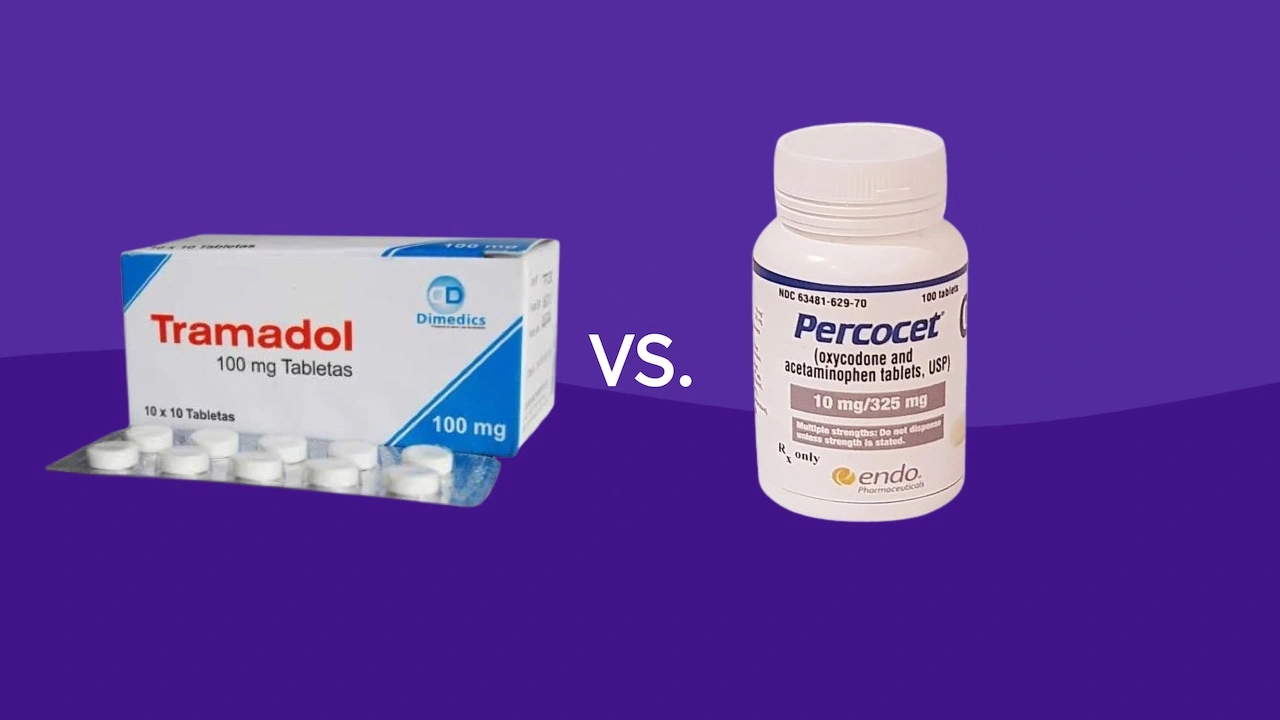Two widely prescribed pain medications, tramadol and Percocet, have garnered significant attention due to their distinct mechanisms of action and therapeutic applications. This tramadol vs percocet article aims to provide a detailed comparison between these two pain relievers, exploring their pharmacological properties, dosing considerations, and potential side effects.
What is Tramadol?
Tramadol is a unique pain medication classified as a semi-synthetic opioid analgesic. Unlike traditional opioids, its pain-relieving effects of tramadol through a dual mechanism of action. It binds to the body’s opioid receptors, which are responsible for pain perception, while also inhibiting the reuptake of norepinephrine and serotonin, two neurotransmitters involved in modulating pain signals short acting.
Tramadol’s Mechanism of Action:
- Opioid Receptor Binding: Tramadol acts as a weak μ-opioid receptor agonist, mimicking the effects of natural opioids like endorphins and enkephalins.
- Monoamine Reuptake Inhibition: It inhibits the reuptake of norepinephrine and serotonin, enhancing their levels in the synaptic cleft and modulating pain perception.
Dosing and Administration:
Tramadol is available in immediate-release and extended-release formulations, with typical dosages ranging from 50 mg to 300 mg per day, depending on the severity of pain and individual response. It is classified as a Schedule IV controlled substance due to its potential for abuse and dependence.
What is Percocet?
Percocet is a combination medication containing oxycodone, a potent opioid analgesic, and acetaminophen, a non-opioid relieve pain and fever reducer. This combination aims to provide effective pain relief while minimizing the potential for side effects associated with higher doses of either component alone.
Percocet’s Mechanism of Action:
- Opioid Receptor Binding: Oxycodone, the primary active ingredient in Percocet, binds to μ-opioid receptors in the brain and spinal cord, reducing the perception of pain signals.
- Acetaminophen Synergy: Acetaminophen enhances the analgesic effects of oxycodone and helps lower the required opioid dosage, potentially reducing opioid-related side effects.
Dosing and Administration:
Percocet is available in various strengths, with oxycodone doses ranging from 2.5 mg to 10 mg per tablet, combined with 325 mg of acetaminophen. It is classified as a Schedule II controlled substance due to its high potential for abuse and dependence.
Comparing Tramadol and Percocet:
While both tramadol and Percocet are effective pain relievers, they differ in several key aspects, including their mechanisms of action, potency, and potential side effects.
- Mechanism of Action: Tramadol acts as a weak opioid receptor agonist and inhibits monoamine reuptake, while Percocet’s primary component, oxycodone, is a potent opioid receptor agonist.
- Potency: Percocet, containing oxycodone, is considered a more potent pain reliever compared to tramadol, making it suitable for managing moderate to severe pain.
- Abuse Potential: Percocet, classified as a Schedule II controlled substance, carries a higher risk of abuse and dependence compared to tramadol (Schedule IV).
- Side Effects: Both medications can cause side effects such as drowsiness, constipation, and nausea, but the risk of respiratory depression is generally higher with Percocet due to its potent opioid component.
- Drug Interactions: Tramadol and Percocet may interact differently with other medications, and healthcare professionals must carefully evaluate potential drug interactions before prescribing either medication.
- Risk of Seizures: Tramadol carries a slightly higher risk of seizures compared to Percocet, particularly at higher doses or in individuals with predisposing factors.
Percocet And Tramadol Pain Management Use:
Tramadol is typically recommended for mild to moderate pain conditions, such as musculoskeletal pain, neuropathic pain, and postoperative pain. It may also be used in conjunction with other analgesics for more severe pain.
Percocet, on the other hand, is often prescribed for moderate to severe pain conditions, such as acute postoperative pain, cancer pain, and severe musculoskeletal pain. It may be considered when less potent analgesics are ineffective or when rapid pain relief is required.
Tramadol and Percocet Comparative Analysis
| Tramadol | Percocet | |
| Mechanism of Action | Weak opioid receptor agonist and monoamine reuptake inhibitor | Potent opioid receptor agonist (oxycodone) and acetaminophen |
| Potency | Mild to moderate pain relief | Moderate to severe pain relief |
| Controlled Substance | Schedule IV | Schedule II |
| Abuse Potential | Lower | Higher |
| Risk of Respiratory Depression | Lower | Higher |
| Risk of Seizures | Slightly higher | Lower |
| Common Side Effects | Drowsiness, constipation, nausea, dizziness | Drowsiness, constipation, nausea, dizziness |
| Where To Purchase | Buying Tramadol | Out of stock |
Conclusion:
tramadol and oxycodone (Percocet are both effective pain relievers, but their distinct pharmacological properties make them suitable for different pain management scenarios. Tramadol may be preferred for milder pain conditions or as an adjunctive therapy, while Percocet is often reserved for moderate to severe pain when rapid and potent relief is required. Healthcare professionals must carefully evaluate each patient’s pain condition, medical history, and potential risks before prescribing either medication. Ultimately, the choice between tramadol and Percocet should be based on a comprehensive assessment of the patient’s needs, with a focus on providing effective pain relief while minimizing potential side effects and risks.

